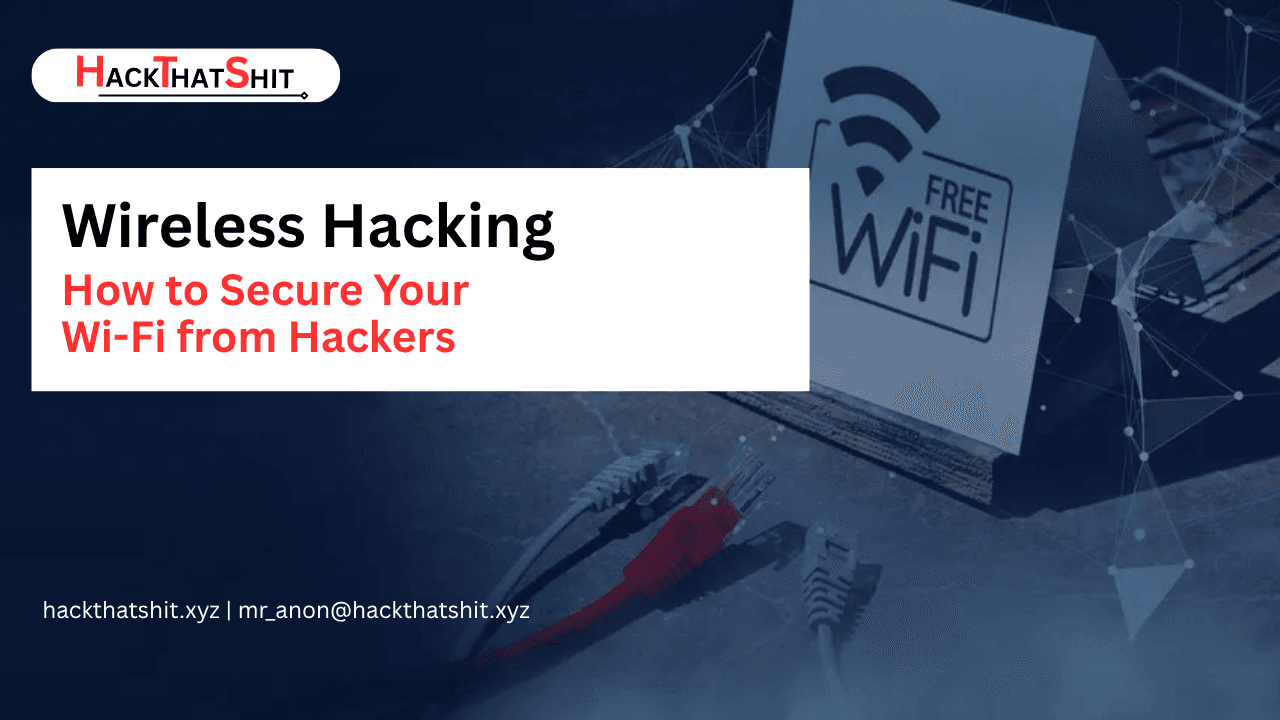Introduction
You’ve now seen how wireless networks can be scanned, sniffed, phished, and even cracked. But most of these attacks work only because of weak configurations.
In this post, you’ll learn how to secure your Wi-Fi using industry best practices — from encryption choices to router settings — to keep both casual snoopers and skilled attackers out.
🔐 Use Strong Encryption (WPA3 > WPA2)
Always use:
WPA3 (if available) — it’s the most secure standard
Otherwise, use WPA2 AES (not TKIP)
❌ Never use WEP or open networks
❌ Avoid WPA/WPA2 mixed mode
🧠 Set a Strong Passphrase
Use a password that’s:
At least 12–16 characters
Includes letters, numbers, symbols
Avoids dictionary words
Example:
gD7!xF@9wPQ#rZ2A strong WPA2 password prevents cracking even if the handshake or PMKID is captured.
🧱 Disable WPS
WPS is convenient but extremely vulnerable to brute-force attacks (see Part 11).
Disable it in your router settings immediately.
🚫 Hide or Rename the SSID
Avoid broadcasting sensitive information:
Change the default SSID (don’t include your name, company, or location)
Optionally disable SSID broadcast (not a security fix, but adds obscurity)
🔐 Update Firmware Regularly
Old router firmware = old vulnerabilities.
Check your router model on the vendor site
Update firmware periodically
Enable auto-updates if supported
🚫 Disable Remote Management & Unused Features
Turn off:
Remote administration
UPnP
Telnet/SSH access (unless you know what you’re doing)
Only enable services you truly need.
🧑💻 Monitor Connected Devices
Regularly check your router for unknown devices:
Kick off unknown clients
Change Wi-Fi password if needed
Enable client isolation on guest networks
Use apps like:
Fing
Advanced IP Scanner
Your router’s built-in UI
🌐 Use a Guest Network
For visitors or smart devices:
Create a separate guest network
Isolate it from your main LAN
Use a different SSID and password
This keeps your critical devices off the same network as untrusted ones.
📡 Use a Firewall & VPN
Enable router-level firewall (usually on by default)
Use a VPN on all your devices, especially on public Wi-Fi
Consider a hardware VPN router for full-home encryption
🧠 Know the Tools (So You Can Detect Them)
Now that you’ve used tools like:
airodump-ng,aircrack-nghcxdumptoolBettercapFluxion
You know what signs to look for:
Sudden disconnects (deauth attacks)
Captive portals when reconnecting
Slow or suspicious Wi-Fi behavior
Train yourself and others to recognize red flags.
✅ Bonus: Router Hardening Checklist
| Setting | Recommendation |
|---|---|
| WPA Version | WPA3 (or WPA2 AES only) |
| WPS | Disabled |
| Admin Password | Strong, not default |
| SSID | Custom, obscure |
| Guest Network | Isolated & secured |
| Remote Access | Disabled |
| Firmware | Up-to-date |
| MAC Filtering | Optional (not foolproof) |
Wrapping Up
Securing your Wi-Fi isn’t just about preventing hackers — it’s about protecting your privacy, your devices, and your data. A few simple tweaks can dramatically reduce your attack surface.
Next up:
🎓 Part 14 – Best Practices for Ethical Hacking & Reporting
We’ll conclude the series with a guide on responsible disclosure, certifications, and becoming a professional ethical hacker.

1 thought on “How to Secure Your Wi-Fi from Hackers”